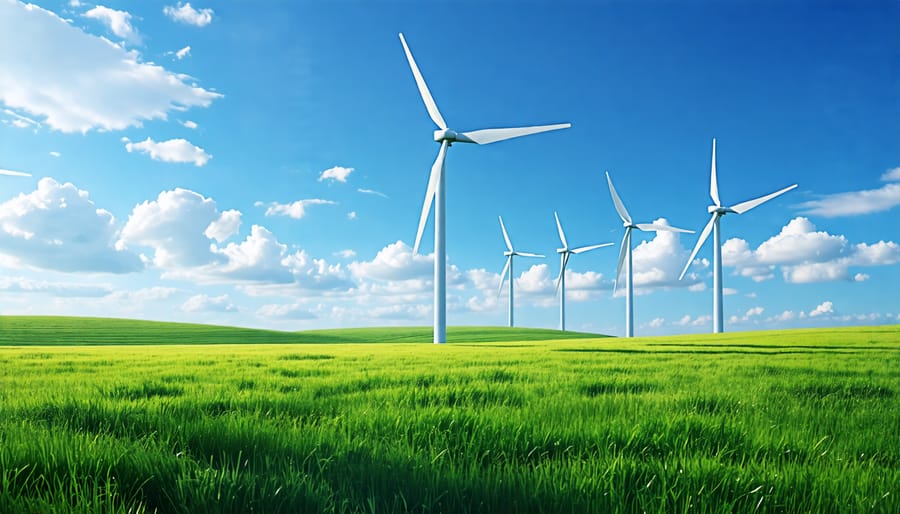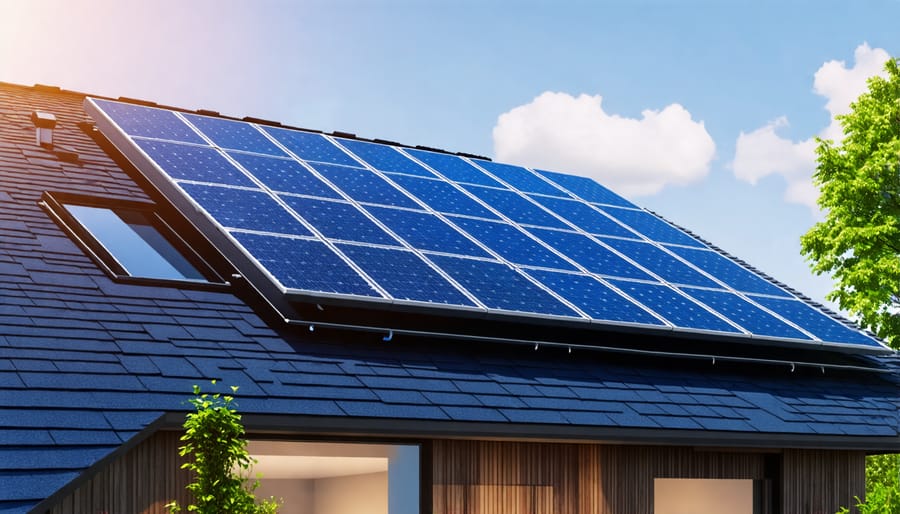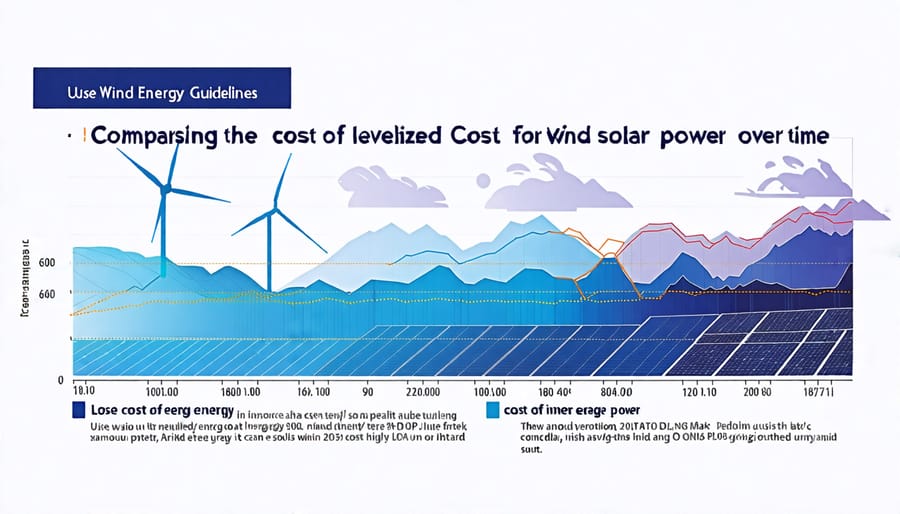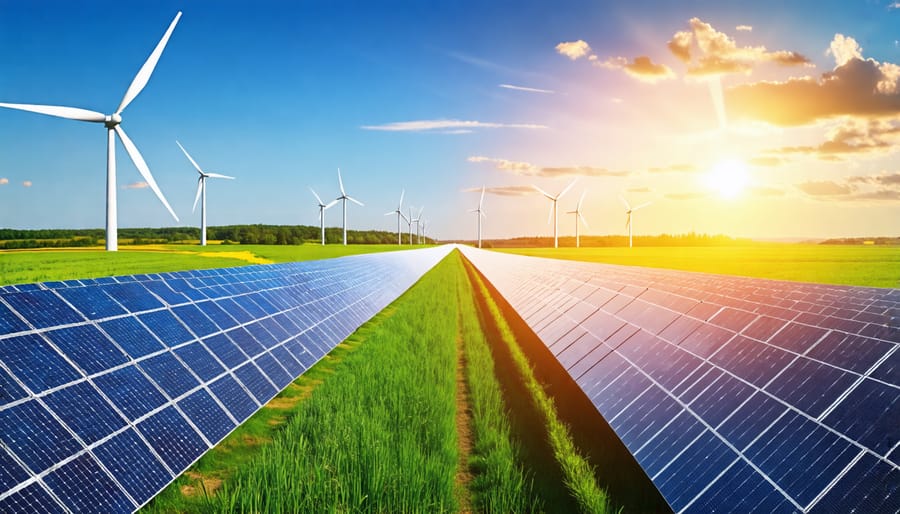As the world seeks cleaner energy solutions, the choice between wind and solar power often comes down to cost. Both wind and solar have seen remarkable cost declines in recent years, making them increasingly competitive with fossil fuels. But which one offers the most bang for your renewable energy buck? In this article, we’ll dive into a detailed cost comparison of wind and solar power, examining key factors like: – Upfront installation and equipment costs – Ongoing operation and maintenance expenses – Capacity factors and energy output per dollar invested – Levelized cost of electricity over the project lifetime – Future cost projections based on technology improvements By the end, you’ll have a clear understanding of how wind and solar stack up in terms of affordability, both today and in the years to come. Armed with this knowledge, you can make more informed decisions about the renewable energy investments that make sense for your home, business, or community. Let’s get started comparing the costs of harnessing the power of wind and sun!
Wind Power Costs

Upfront Capital Costs
The upfront capital costs for wind power projects can be substantial, primarily due to the expenses associated with wind turbines, installation, and infrastructure development. Wind turbines themselves are a significant investment, with costs varying based on size, capacity, and manufacturer. Larger, more powerful turbines generally have higher price tags but can generate more electricity, potentially offsetting the initial investment over time. Installation costs include site preparation, foundation construction, and the erection of the turbines using specialized cranes. These costs can fluctuate depending on the location, terrain, and accessibility of the site. Additionally, infrastructure costs, such as building access roads, connecting to the power grid, and constructing substations, contribute to the overall upfront capital expenditure. While these initial costs may seem daunting, it’s essential to consider the long-term benefits of wind power, including reduced operating costs and the potential for a strong return on investment as the technology continues to advance and become more efficient.
Operating and Maintenance Costs
While wind power has lower upfront costs compared to solar, operating and maintenance expenses are an important consideration. Wind turbines require regular servicing, typically every six months, to ensure optimal performance and longevity. This includes inspections, oil changes, and repairs to mechanical and electrical components. Offshore wind farms often have higher maintenance costs due to the challenging marine environment and accessibility issues. In addition to scheduled maintenance, unexpected repairs may be necessary if turbines are damaged by extreme weather or equipment failures. Costs can vary widely depending on the extent of the damage and the complexity of the repair. Monitoring systems, which help detect issues early, also add to ongoing expenses. Over a wind farm’s 20-25 year lifespan, operation and maintenance costs are estimated to be around 20-25% of the total lifecycle cost. While this is significant, it’s important to note that these costs are generally stable and predictable, allowing for effective budgeting. As technology advances and the industry matures, strategies to optimize maintenance and reduce costs are continually being developed, such as the use of drones for inspections and predictive maintenance techniques. Despite the ongoing expenses, wind power remains a cost-competitive and environmentally beneficial energy solution.
Solar Power Costs

Upfront Capital Costs
The upfront capital costs of solar power include the expenses associated with purchasing and installing solar panels, inverters, and mounting systems. Solar panels are the most significant cost component, with prices varying based on the type of panel (monocrystalline, polycrystalline, or thin-film), efficiency, and manufacturer. Inverters, which convert the direct current (DC) electricity generated by the panels into alternating current (AC) for use in homes and buildings, also contribute to the initial costs. Mounting systems, such as rooftop racks or ground-mounted structures, are necessary to securely install the panels and optimize their exposure to sunlight. Installation costs encompass the labor required to assess the site, design the system, and physically install the components. These costs can vary depending on the complexity of the installation, local labor rates, and any necessary permits or inspections. While the upfront capital costs of solar power may seem substantial, it’s essential to consider the long-term financial benefits, such as reduced electricity bills and potential tax incentives, which can offset the initial investment over time.
Operating and Maintenance Costs
Solar power systems typically have lower operating and maintenance costs compared to wind turbines. Once installed, solar panels require minimal upkeep, mainly consisting of regular cleaning to remove dirt, dust, and debris that can reduce efficiency. Most solar panels have no moving parts, which means less wear and tear over time. Many manufacturers offer warranties of 25 years or more, ensuring long-term performance with minimal intervention. However, solar inverters, which convert the direct current (DC) electricity generated by the panels into alternating current (AC) for grid use, may need replacement every 10-15 years. This can add to the overall maintenance costs of a solar array. Additionally, larger solar farms may require more extensive monitoring and maintenance to ensure optimal performance across hundreds or thousands of panels. Despite these costs, the operating expenses for solar power are generally predictable and manageable. With proper installation and maintenance, solar arrays can provide clean, reliable energy for decades with relatively low ongoing costs compared to other energy sources.

Cost Comparison
When comparing the costs of wind power and solar power, several factors come into play. The location, scale of the project, and available incentives can significantly impact the overall cost of each energy source. In terms of location, wind power tends to be more cost-effective in areas with consistent, strong winds, such as offshore or in open plains. Solar power, on the other hand, is more economical in regions with abundant sunshine and minimal cloud cover. The cost of land acquisition and transmission infrastructure also varies by location, affecting the total cost of the project. The scale of the project is another crucial factor. Large-scale wind farms benefit from economies of scale, as the cost per megawatt decreases with increased capacity. Similarly, utility-scale solar projects are generally more cost-effective than smaller, residential installations due to bulk purchasing and streamlined installation processes. Government incentives and policies play a significant role in the cost comparison between wind and solar power. Many countries offer tax credits, grants, and subsidies to encourage the adoption of renewable energy. These incentives can drastically reduce the upfront costs for both wind and solar projects, making them more competitive with traditional fossil fuel-based energy sources. On average, the levelized cost of electricity (LCOE) for wind power ranges from $0.03 to $0.06 per kilowatt-hour (kWh), while solar power’s LCOE ranges from $0.04 to $0.08 per kWh. However, these figures can vary significantly depending on the aforementioned factors. It’s important to note that both wind and solar power have seen remarkable cost reductions over the past decade. Technological advancements, increased market competition, and economies of scale have driven down the costs of wind turbines and solar panels. As a result, in many regions, wind and solar power are now cost-competitive with, or even cheaper than, traditional fossil fuel-based energy sources. In conclusion, the cost comparison between wind power and solar power is highly dependent on location, scale, and available incentives. While both technologies have experienced significant cost reductions, their cost-effectiveness varies on a case-by-case basis. As the world continues to transition towards renewable energy, it’s essential to consider these factors when evaluating the economic viability of wind and solar power projects.
Future Cost Projections
Recent technological advancements and market dynamics are expected to significantly impact the cost trends for wind and solar power in the coming years. Experts predict that the cost of solar panels will continue to decrease as manufacturing processes become more efficient and the demand for solar energy grows. Similarly, innovations in wind turbine design, such as larger rotor diameters and taller towers, are likely to increase the efficiency and output of wind farms, reducing the overall cost per unit of energy produced. Moreover, government policies and incentives are expected to play a crucial role in shaping the future cost landscape of renewable energy. Many countries are setting ambitious renewable energy targets and offering financial support to encourage the adoption of wind and solar power. As these technologies become more prevalent and integrated into the energy mix, economies of scale are likely to further drive down costs. While the exact trajectory of future costs remains uncertain, the overall trend points towards increasing affordability and competitiveness of both wind and solar power compared to traditional fossil fuel-based energy sources. This positive outlook bodes well for the widespread adoption of renewable energy and the transition towards a more sustainable future.





